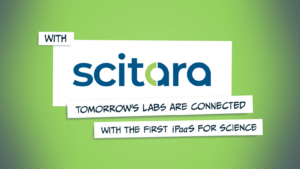The International Society for Pharmaceutical Engineering (ISPE) Pharma 4.0™ Special Interest Group (SIG) was created to understand Industry 4.0 and how it relates to the specific requirements of the pharmaceutical industry. As a result, Pharma 4.0 came into being to expand the principles of Industry 4.0 into a pharmaceutical environment. Pharma 4.0 represents the next phase in the industry, as pharma companies across the board catch up in embracing fourth-generation technologies and processes.
The ISO Q10 Pharmaceutical Quality System[1] acknowledges and reinforces the very real need for pharmaceutical organizations to be ready for change – and not just changes to systems, policies, and technology, but also being able to adapt to new ways of working.
Pharma 4.0 “…will connect everything, creating new levels of transparency and adaptivity for a digitalized plant floor. This will enable faster decision-making and provide in-line and in-time control over business, operations, and quality.”[2]
Are You Running a Lab with Paper Notebooks and Spreadsheets in a Digitalized World?
Modern pharma labs face major challenges in achieving the goals of Pharma 4.0. Some labs continue to use outdated instrumentation and informatics that lack digital communication between themselves. Data quality issues also persist, especially as the sheer volume of data increases. Aggregating data from multiple systems leads to faster formulation, stability, and reducing time to drug discovery.
The pharmaceutical industry is one of the most risk-averse of the business world, and the most resistant to change. This is not sheer stubbornness; there is some logic in the Willy Loman-esque clinging to the way things have always been done. This resistance to change is rooted in the regulatory scrutiny and compliance in drug discovery and development and the need to ensure absolute end-to-end data integrity throughout every aspect of the drug development chain from R&D to manufacturing. Other challenges include increasingly large data sets, outdated or legacy instruments that may require manual transcription of data, and capital costs associated with new equipment and software, cultural resistance, and the associated timeline required for training and integration. Validation represents an additional point of resistance, as laboratories quickly discover that a move to incorporate updated equipment or new software will require validation and change management, despite the significant potential for productivity gains and cost reduction.
Even though the ISPE suggests that avoiding Pharma 4.0 represents a significant business risk, few companies have taken full advantage of its potential benefits.
Getting the Full Benefit of Pharma 4.0
Deriving the full benefit of Pharma 4.0 may start with a singular piece of technology, but it certainly does not end there. The IPSE SIG explains that the foundation of Pharma 4.0 is built on data integrity, organization and processes, and culture – an important distinction, given that the move to Pharma 4.0 requires more than deployment of new technology and digitalization of process. It calls for a cultural shift throughout the business, and a combination of people, process, and technology to deliver measurable benefits.
A Results-oriented Strategy for Pharma 4.0 Based on Scitara DLX™
More than anything, Pharma 4.0 is rooted in the ability to connect everything, in a “no instrument or application left behind” approach, differing from the dominant pharma lab model which relies mostly on multiple disconnected, vendor-specific, one-to-one data sharing paths. Scitara DLX defines the “no instrument or application left behind” model with a Pharma 4.0 approach to the laboratory, delivering on the ability to connect virtually anything – including legacy instruments – and fully digitalize the lab for maximum benefit.
Are You Ready for a Change?
Industry 4.0 has already changed the face of countless industries, and today Pharma 4.0, as defined by the ISPE and delivered by Scitara DLX, represents a new competitive advantage for pharma companies through faster decision-making, stronger process control, digitalization, automation, higher levels of quality, and monitoring and validation to ensure regulatory compliance.
[1] US Department of Health and Human Services, Food and Drug Administration. “Guidance for Industry. Q10 Pharmaceutical Quality System,” April, 2009.
